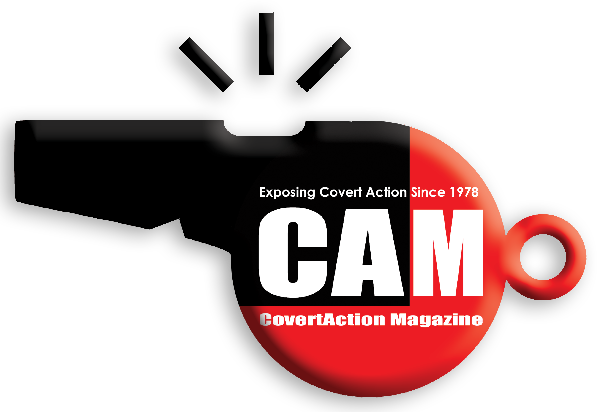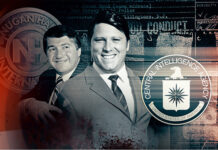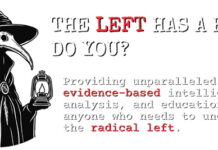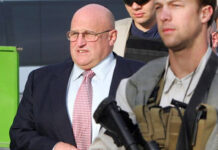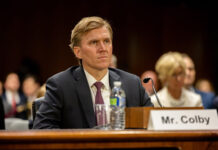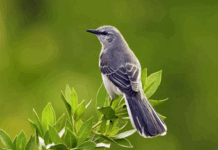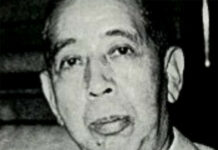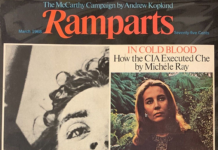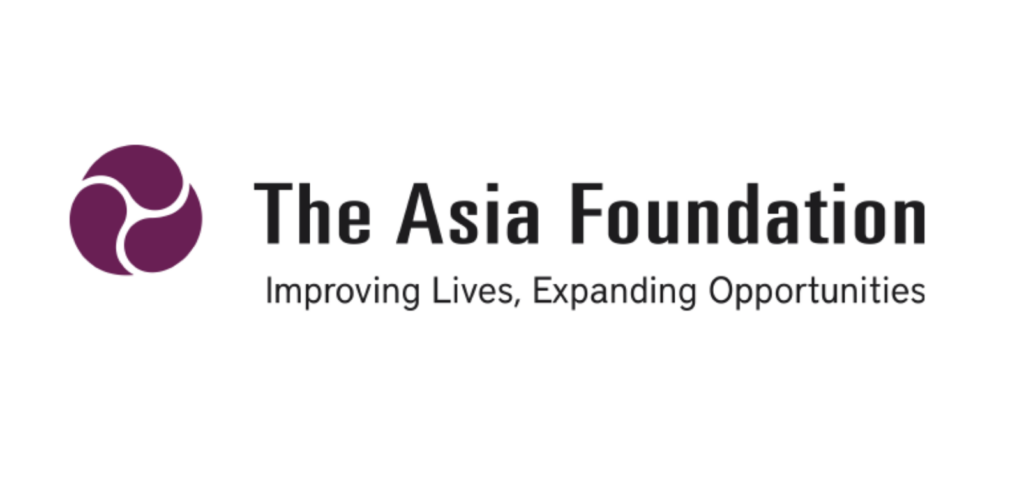
Headquartered in San Francisco, The Asia Foundation is a non-profit organization receiving public and private support that coordinates development projects, educational programs and cultural exchanges across Asia, in part with the aim of facilitating better relations with the U.S., according to its website.
Put in slightly different terms, The Asia Foundation is part of the soft-power arm of the U.S. empire, whose underlying purpose is to try to groom young Asian leaders to serve as U.S. strategic proxies and to create a positive image of the U.S. in Asian countries so they will ally with the U.S. instead of China.
David H. Price’s book Cold War Deceptions: The Asia Foundation and the CIA provides a history of The Asia Foundation and its connections to the CIA during the Cold War.
Price is an anthropologist who has published previous studies of the CIA’s recruitment of anthropologists during the Cold War and their service to the U.S. empire, and on the FBI’s surveillance of dissident academics.
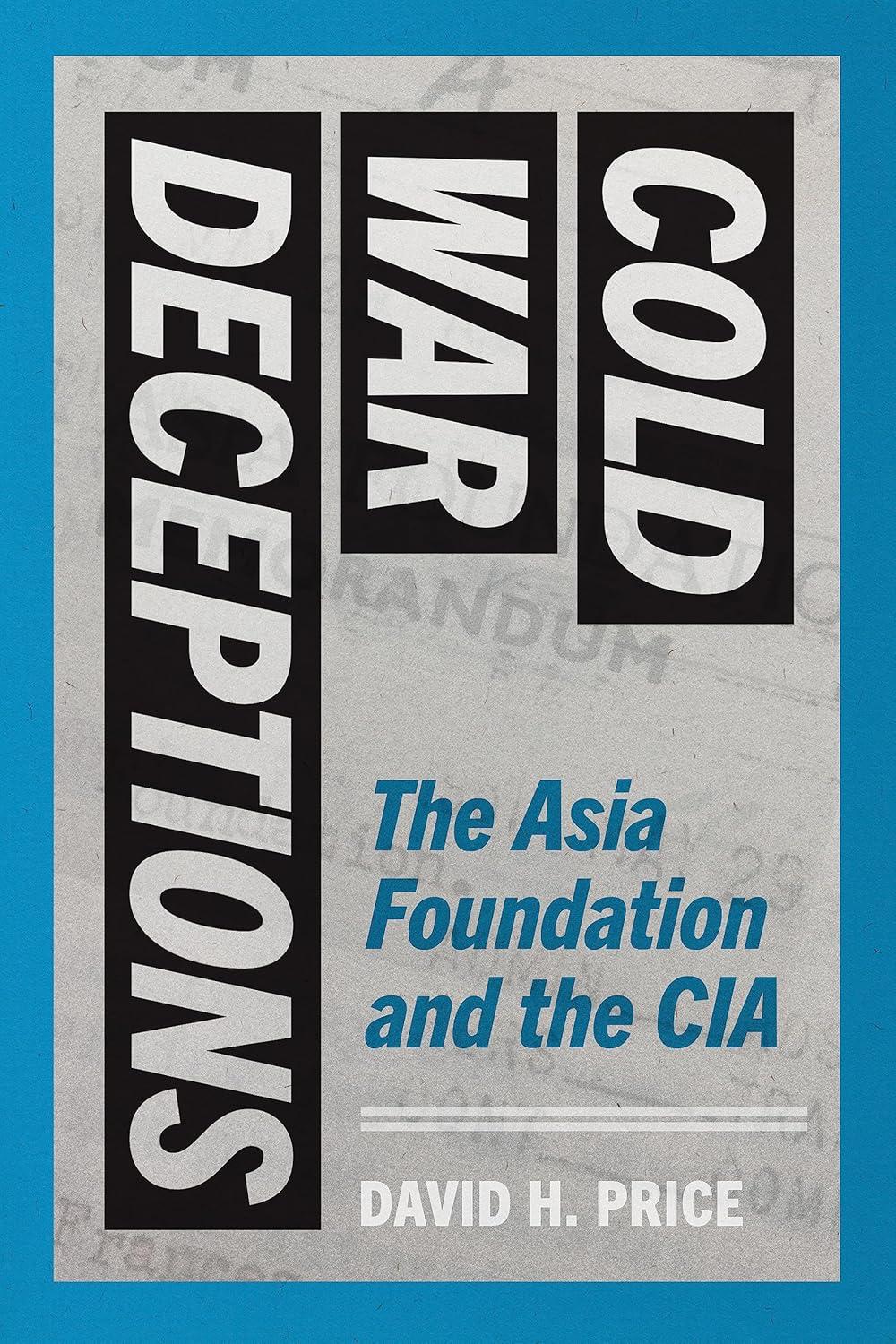
Cold War Deceptions is among his most important works in revealing the CIA’s nefarious influence over The Asia Foundation, which played a crucial role in disseminating U.S. propaganda during the Cold War and served as a cover for intelligence operations.
Cold War Deceptions is based on extensive research into The Asia Foundation’s records which are located at the Hoover Institution at Stanford University.
Significantly, Price found that Asia Foundation staffers contributed reports on political developments in foreign nations in the 1950s and 1960s that were disseminated to the CIA.
The CIA valued these reports because the staffers were carrying out research in sometimes remote corners of Southeast Asia and interacting with leading intellectual and political figures.
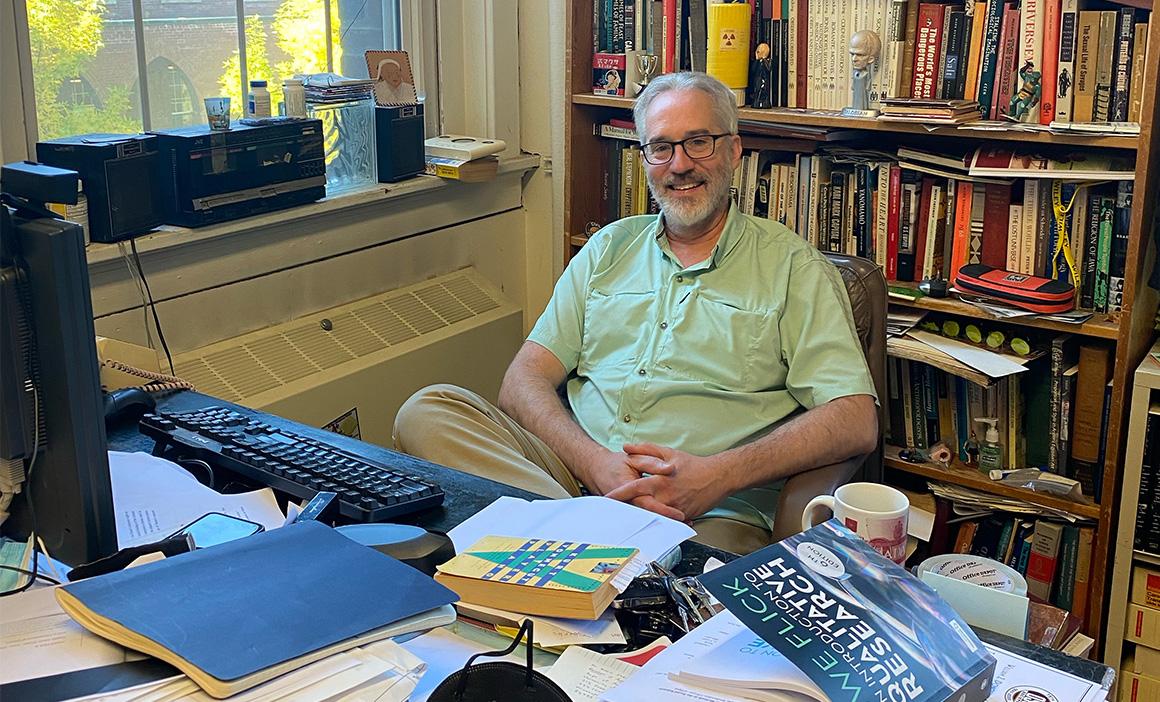
The Asia Foundation packaged itself as an independent non-profit organization that was helping to provide education and development assistance to Third World countries, hiding its ties to the CIA whose code name for The Asia Foundation was DTPILLAR.
Price writes that The Asia Foundation’s efforts to “shape Asian political developments must be seen as not just some kindly attempt at gentle persuasion but as part of the CIA’s larger political project during this era [the Cold War], with goals that included violent intervention that underestimated local Asian political movements not to the CIA’s liking.”[1]
DTPILLAR
The CIA secretly launched Operation DTPILLAR in early 1951 with the purpose of “promoting, aiding and assisting the cause of individual and national freedom in Asia, as opposed to Communist and other totalitarian doctrines.”[2]
Journalist Douglas Waller reported that Frank Wisner, a CIA officer in charge of worldwide propaganda operations, talked an old friend, Turner McBaine with whom he had served in the Office of Strategic Services (OSS) Cairo Station during World War II, into setting up The Asia Foundation, which Wisner bankrolled under the operation code-named DTPILLAR, whose purpose was to subsidize non-communist scholars and academic programs in Southeast Asia.[3]
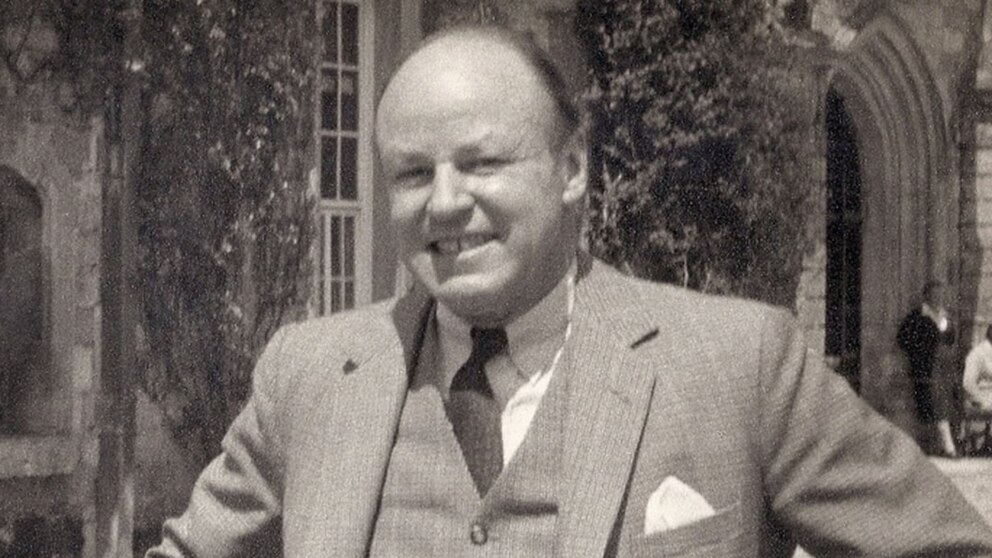
DTPILLAR initially operated through the Committee for a Free Asia (CFA) whose name was changed to The Asia Foundation in 1954.
During its first decade of operation (1954-1964), the CIA channeled $76 million into The Asia Foundation, which distributed more than four million books and nearly one million journals to over 10,000 recipients in Asia during the early Cold War.[4]
Early DTPILLAR documents showed The Asia Foundation’s focus on promoting radio broadcasting, publishing and assisting “noncommunists” and “non totalitarian elements within communist countries” and “aiding anticommunist and non totalitarian travelers, refugees and exiles.”[5]
Under the leadership of Robert Blum (1954-1962), The Asia Foundation shifted DTPILLAR operations away from funding “bluntly obvious anticommunist propaganda campaigns to funding what appeared to be the sort of academic scholarship programs that normal foundations funded,” according to Price.[6]
Described by author William Corson as a protégé of CIA Director Allen Dulles, Blum was a former Office of Strategic Service (OSS) counterintelligence chief with experience in Southeast Asia who channeled U.S. foreign aid to anticommunist groups as the U.S. chief of mission in Indochina in the early 1950s under the newly formed Economic Cooperation Administration (ECA).[7]
Blum also served as the chief of staff of the Jackson Committee, set up by President Dwight Eisenhower under the direction of CIA Deputy Director William H. Jackson, to propose new means of disseminating anti-communist propaganda and carrying out effective psychological warfare operations in the Cold War.[8]
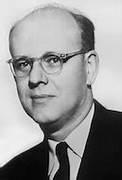
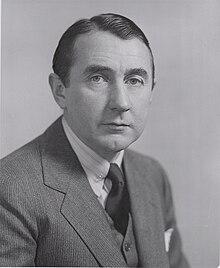
According to Price, Blum’s Asia Foundation reports revealed a neo-colonialist world view in which Asian peoples were often denigrated and white Americans were considered as their saviors.
One report referred to Cambodians as “diffident,” another to Kathmandu as a “primitive city.” Another on Afghanistan stated that The Asia Foundation’s purpose was to “bring the benefits of centuries of civilization to people who have not gone through the pain of earning it.”[9]
Asia Foundation staffers often held the same prejudices as Blum along with his extreme anti-communist world view.
Many like him had served in military or intelligence roles during the Second World War and Korean conflict. They had also studied Asian cultures, history or languages at top universities where post-war CIA recruiting networks flourished, or had worked as journalists or in government service abroad.[10]
Boy Scout Image Veneer
The Asia Foundation’s sister organization, the National Committee for a Free Europe, operated Radio Free Europe, a model for Radio Free Asia whose creation was supported by CIA psywar expert Paul Linebarger.[11]

An Overseas Contacts Branch of The Asia Foundation worked with Chinese maritime customs to establish contacts with ethnic Chinese in other Asian nations and sponsored academic seminars with Chinese intellectuals with hopes of “implanting the idea of installing a truly nationalist government of all non-communist parties in China.”[12]
The Asia Foundation further set up anti-communist Chinese bookshops in Hong Kong and Bangkok, and published books with anti-communist themes, such as Land Reform: Communist China, Nationalist China, Taiwan, India, Pakistan, a critique of Chinese communist land reform and agrarian collectivization policies and valorization of more moderate land reform policies in Taiwan and other non-communist states.[13]
Some of The Asia Foundation’s programming seems on the surface to be innocent—like translating Boy Scout manuals into local languages and supporting Boy Scout programs and setting up teacher training programs and libraries.
However, all its activities fit the larger purpose of trying to instill pro-American sentiments among the local population and undercutting communist influence. (The Boy Scouts, for example, emphasized development of individual responsibility among boys and advanced an anti-communist world view.)
One of the most pernicious influences, according to Price, was The Asia Foundation’s function in helping to compromise U.S. intellectuals and poison academic discourse in the Cold War by helping to define the parameters of acceptable academic discourse and debate.[14]
Oftentimes, The Asia Foundation would sponsor conferences to bring together Asian intellectuals whom it was feared were gravitating to Marxist ideals and expose them to modernization theory and other viewpoints that downplayed the importance of colonialism and neo-colonialism in fueling Third World underdevelopment.
The Asia Foundation additionally financed speaking tours of European and American anti-communist intellectuals in Asia (examples include Raymond Aron and Sidney Hook) and Nieman Foundation for Journalism fellowships at Harvard; hired a leader in the 1956 anti-Soviet Hungarian revolution, Janos Horvath, to teach economics in the Philippines; and sponsored Asian participation in U.S. academic seminars pressing pro-American agendas.
The seminars included Henry Kissinger’s Harvard international seminar, which featured discussions of anti-communist writers like Soviet specialist Adam B. Ulam and Walt W. Rostow, whose book The Stages of Economic Growth was written as an antidote to Karl Marx and promoted U.S. foreign aid programs as key to overcoming Third World underdevelopment. (Rostow was known to have links to the CIA.)
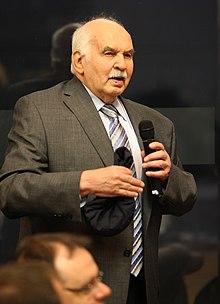
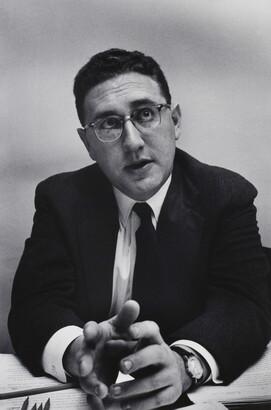
In his review of Asia Foundation files, Price found a description of the political discussion at one of Kissinger’s seminars that featured a guest speaker (Hans Gremann) who championed Allen Dulles’s position that there was no place for neutrality in a world divided by communism and capitalism.
Seminar leaders also discussed how the Soviet Union “exploited” the anti-colonialist and nationalist sentiments of developing nations.[15]
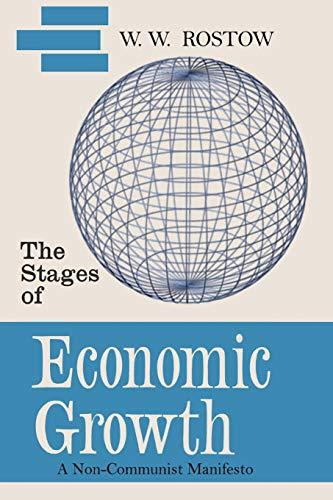
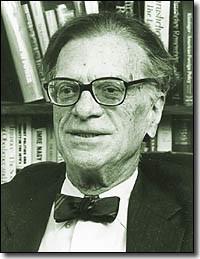
Cloak-and-Dagger Outfit
A 1955 Newsweek article quoted Robert Blum stating that The Asia Foundation was “not a cloak-and-dagger outfit.”
This claim was belied by the fact that the CIA recruited as spies students and other leaders that were brought to the U.S. in Asia Foundation-financed cultural and educational exchanges and relied on Asia Foundation staffers to gather foreign intelligence.
In 1965, 85 Foundation reports were disseminated within the CIA, which routinely interviewed Foundation representatives upon their return to the U.S. from Asian countries.[16] In Borneo, a Foundation representative received CIA training to operate a CIA forward listening post.[17]
Additionally, the Foundation channeled funds to the American Institute for Free Labor Development (AIFLD), a CIA front that infiltrated labor unions in order to elevate anti-communist factions and purge radical leftist ones.
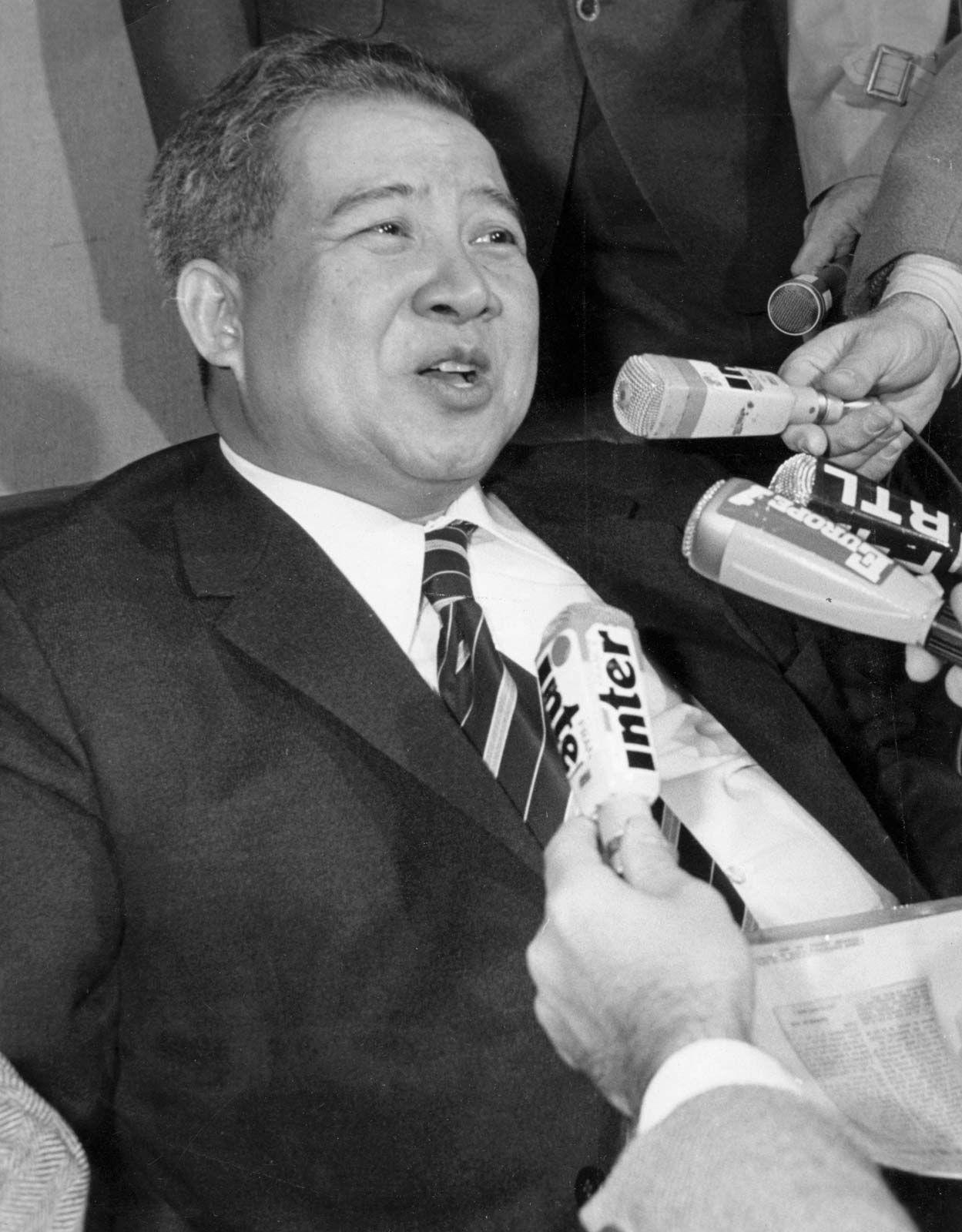
Particularly valuable intelligence was provided by Asia Foundation staff in Cambodia after Prince Norodom Sihanouk expelled all American officials and private citizens after the CIA tried to overthrow and assassinate him.[18]
Additional valuable intelligence was provided on Laos, where the Foundation collected reports on the terror meted out by the U.S.-trained army and police forces, which carried out “arbitrary and wholesale killings” and razed entire villages.[19]
Disturbingly, Price found out that an Asia Foundation source who escorted staff around the Mekong region was a Laotian colonel who “took liberties with local young women” after providing them and their families with liquor.[20]
An Asia Foundation staffer noted his disapproval of the colonel’s behavior but was most concerned that it was undermining the U.S. military-political position in Laos and giving support to the communist Pathet Lao. (the latter had been thrust underground after winning 1958 elections that were sabotaged by the CIA).
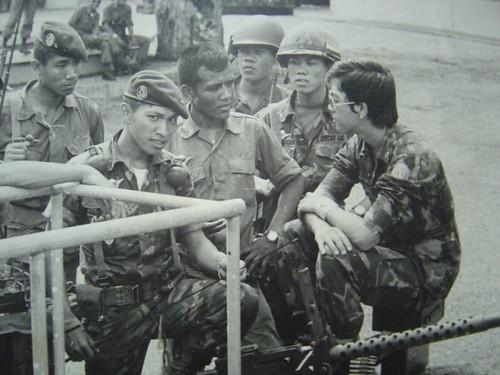
Election Interference
Price details how The Asia Foundation blatantly interfered in elections by providing free publicity for U.S.-backed candidates.
Price uncovered a report on the 1960 election in Laos (in which the Pathet Lao had been barred from running after winning the most votes in the 1958 election) written by Foundation representative Gordon Messegee.
It stated that, if a candidate was favored by The Asia Foundation, their convoy would be supplied with “one motor generator, one public address system, one movie projector, one screen and two or three rolls of film and an expert (usually a Thai) to operate this apparatus.”[21]
This gave them a clear advantage and belied the claim that The Asia Foundation championed fair elections and democracy.
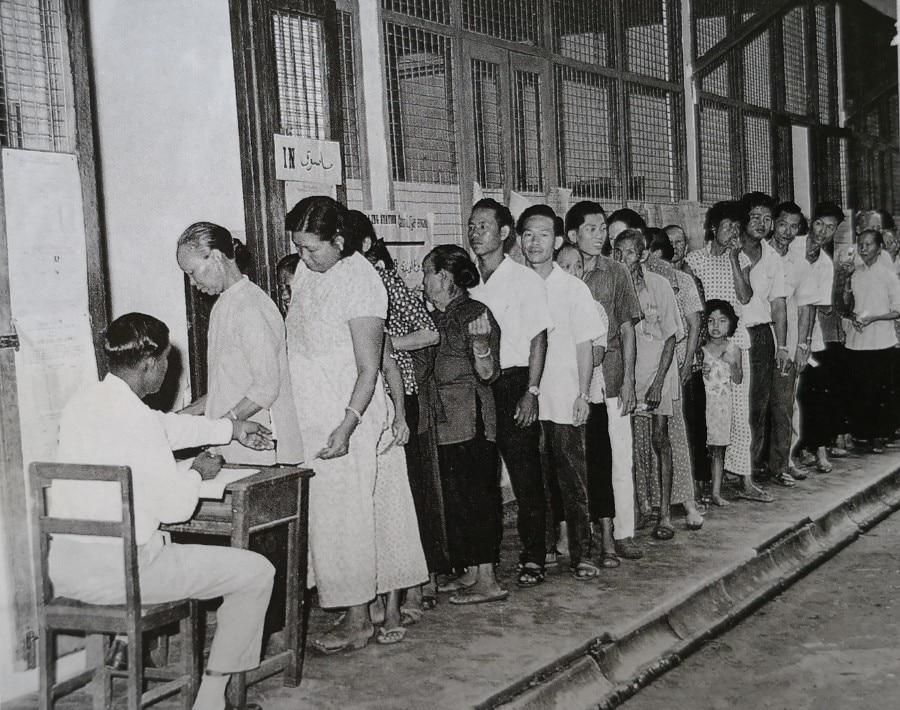
Survey of Thai Hill Tribes and U.S. Counterinsurgency
The imperialistic underpinning of The Asia Foundation’s operations were evident in its work with hill tribes in Thailand.
The CIA was intent on recruiting these tribes into the Thai Border Patrol Police (BPP) and Police Aerial Reconnaissance Unit (PARU), which fought alongside Hmong units in the secret war in Laos, and were involved in counterinsurgency operations designed to prop up a military regime in Thailand loyal to the U.S.
The U.S. used The Asia Foundation to advance a tradition of colonial powers of studying and trying to buy off ethnic minority groups.
The Asia Foundation commissioned ethnographic studies and anthropological reports on the hill tribes that could be used by the CIA, U.S. military and other U.S. government agencies to better facilitate recruitment efforts.[22]
James L. Woods, Pentagon adviser and Advanced Research Projects Agency (ARPA) counterinsurgency specialist, referred to the work with the hill tribes as a “CIA project” run under the cover of The Asia Foundation.[23]
In 1965, a tribal research center was set up in Chiang Mai with Asia Foundation funding and supplemental funding from the UN Narcotics Division, whose interest in the hill tribes stemmed from their growing of opium.
Price notes the ethnocentric attitude of some of the anthropological studies, which failed to acknowledge that the hill tribes liked smoking opium and that its use was part of their culture.[24]
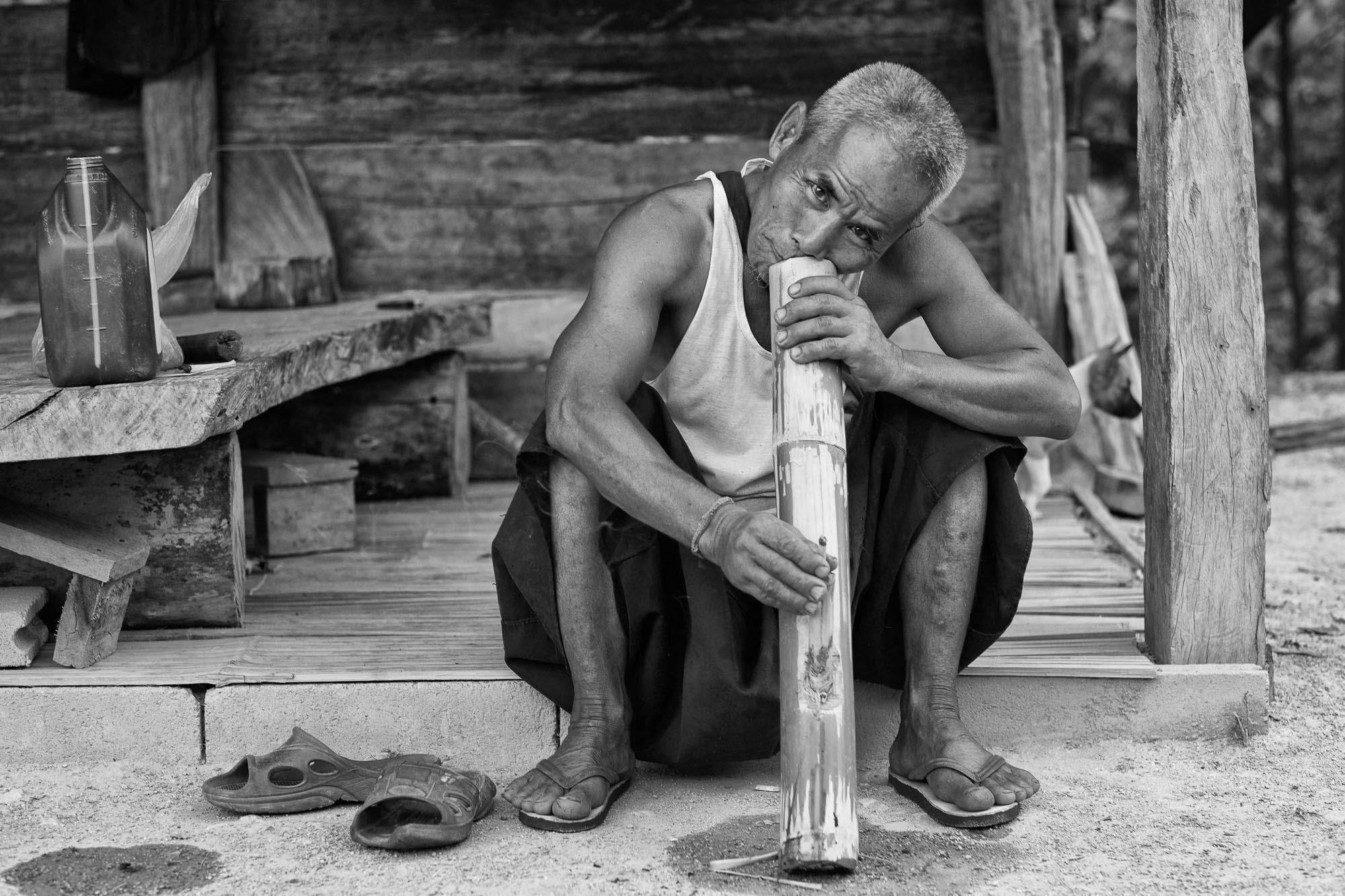
The reports at the same time acknowledged collaboration between the Thai army and remnants of the Guomindang (GMD) stationed in Chiang Mai who used profits from the opium trade to finance military operations directed against communist forces in Laos and China.[25]
Vietnam, We’ve All Been There
In Vietnam, The Asia Foundation carried out similar projects as in Thailand with the Montagnard tribal minority who were valued for their fierce fighting capability. The Foundation actually sent a Montagnard delegation to Thailand to “observe tribal affairs activities” and study how tribal groups developed more active roles in national government.[26]
In 1960, The Asia Foundation provided a $16,570 grant financing a mobile film service for Montagnard areas in South Vietnam, which screened anti-communist-themed Hollywood movies in remote Montagnard villages. Another $3,300 Foundation project established teacher training courses for mountain tribes in Vietnam the CIA was trying to recruit to fight the Vietcong.[27]
Even more sinister was the Foundation’s role in drafting the plan for the forced resettlement of Montagnards from Vietcong-held territories, which disrupted their traditional ways and left them impoverished and in a desperate state that drove them to fight for the U.S. military as cannon fodder.[28]
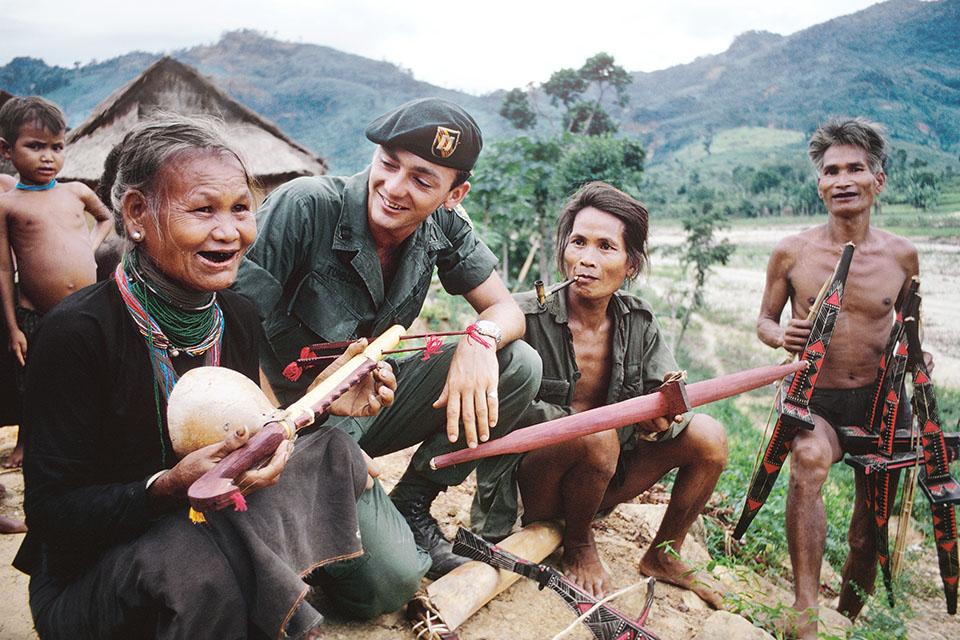
Yielding dire environmental effects, the Montagnard resettlement project was part of the larger Strategic Hamlet program where peasants in Vietcong-held territory were relocated into supposedly model villages.
Under the direction of CIA operative Cord Meyer, Jr., The Asia Foundation supplied 56 model villages with 198 classrooms in schools located inside fortified walls, built 70 schools, and provided a grant to the South Vietnamese Ministry of National Education to pay for the training and salaries of teachers working the Strategic Hamlet schools program.[29]
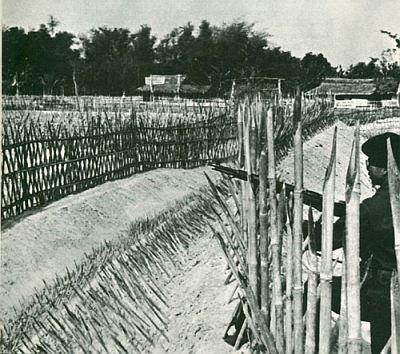
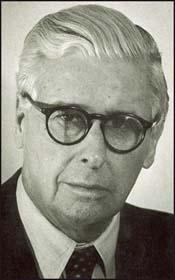
Beginning in the mid-1950s, The Asia Foundation formed a collaboration with the American Friends of Vietnam (AFV)—a CIA-financed lobby group supporting expanded U.S. aid to South Vietnam.
A key focus was on bringing future leaders for study in the U.S. and on supporting development projects to bolster the regime of Catholic anti-communist Ngo Dinh Diem, who was close with Asia Foundation Director Robert Blum.[30]
Ironically, when Blum met with one of Diem’s advisers, Tran Van Do, he was told that Diem “behaved as a conqueror in South Vietnam” and showed favoritism toward Central Vietnam and the Catholic population, which spread popular disaffection with his rule.[31]
These comments did not dissuade Blum from continuing to work with him and the AFV, whose projects set the groundwork for the disastrous escalation of U.S. intervention in Vietnam.[32]
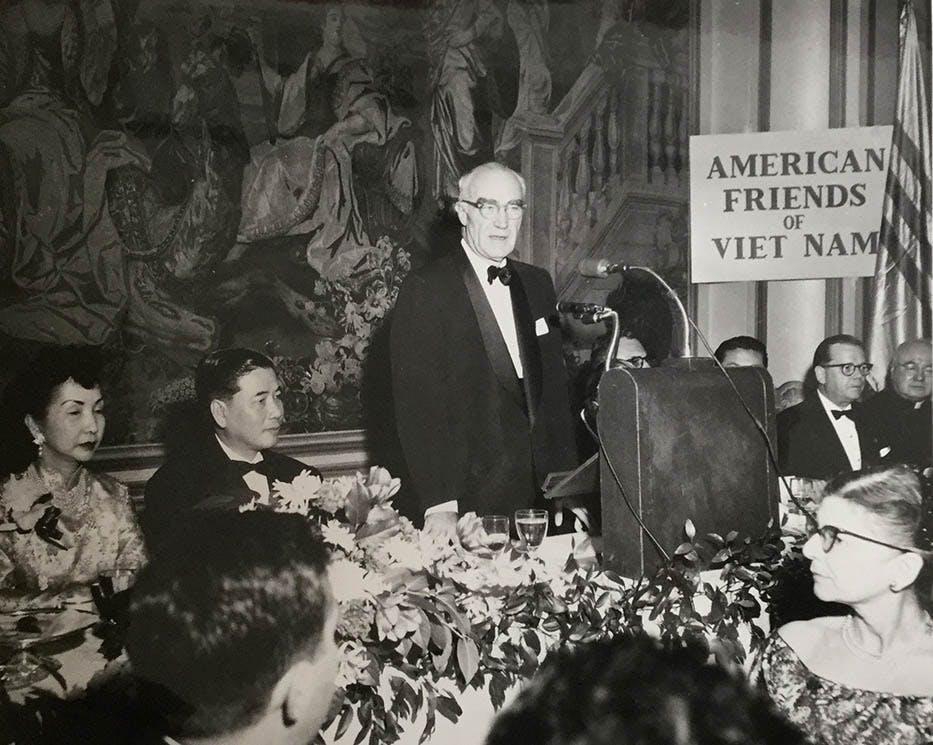
Exposure of CIA Ties and Continuity
In 1967, The Asia Foundation’s CIA ties were exposed in The New York Times, resulting in the CIA cutting its official relationship with the Foundation and resignation of a number of its staff.
Price emphasizes that The Asia Foundation was able to offset the loss of CIA support by securing greater financial support from the private sector, U.S. State Department and United States Agency for International Development (USAID), which often operated as a CIA front.
The continuity in The Asia Foundation’s operation was reflected in the fact that its president at the time of The New York Times exposé, Haydn Williams, who started his tenure in 1964, remained head of the Foundation until 1989.[33]
Like in the Cold War, a list of The Asia Foundation’s programs today makes it seem like a benevolent charity organization staffed by do-gooders.
However, if we consider the history recounted by Price, the funding behind it, and larger geopolitical landscape, this is largely an illusion.
The current president and CEO of The Asia Foundation, Laurel E. Miller, significantly, served as a senior foreign policy expert at the RAND Corporation, a Pentagon-CIA think tank, as Director for Western Hemisphere Affairs at the National Security Council, and as special representative for Afghanistan at the Department of State.[34]
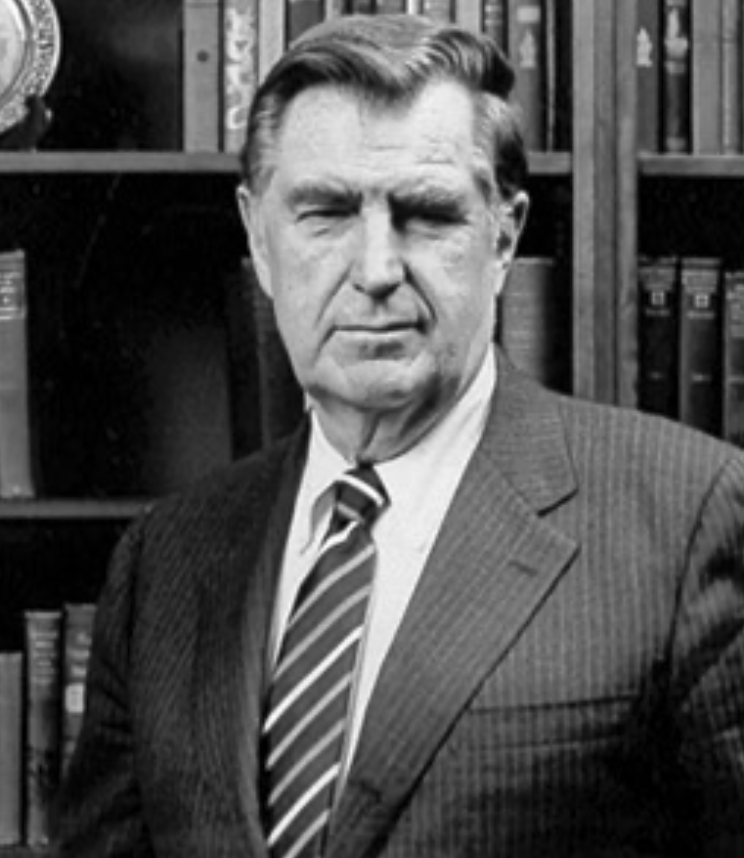
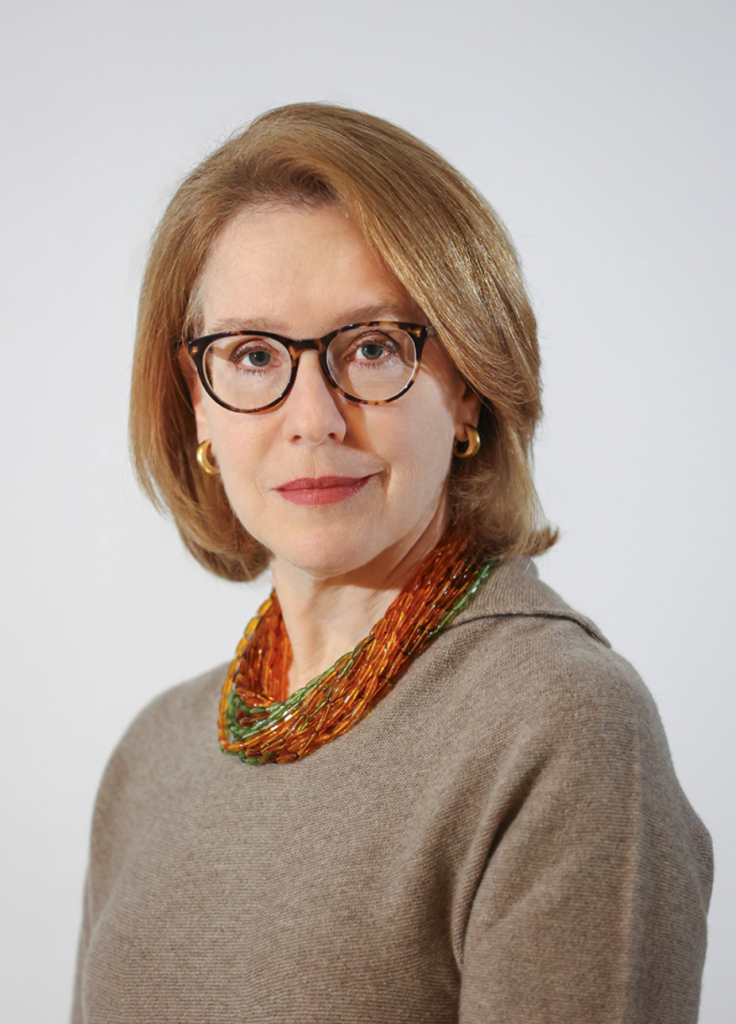
Members of the Board of Directors include former high-ranking military officers and government officials who were intimately involved in imperialistic wars like Afghanistan, and others who have served in leadership roles in establishment foreign policy organizations like the Council on Foreign Relations and Scowcroft Group, which advises corporations looking to make investments in Asia.
Asia Foundation executives and Board members have helped to support the “pivot to Asia” policy that has contributed to an expansion of the U.S. military role in Asia and repeat of various destructive patterns of the Cold War with which The Asia Foundation continues to be associated.
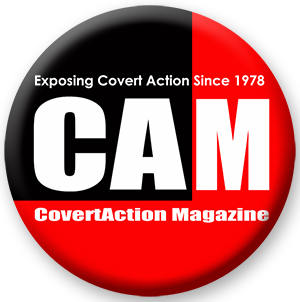
David H. Price, Cold War Deceptions: The Asia Foundation and the CIA (Seattle: University of Washington Press, 2025), xiii. ↑
Price, Cold War Deceptions, 7. ↑
Douglas Waller, The Determined Spy: The Turbulent Life and Times of CIA Pioneer Frank Wisner (New York: Penguin Random House, 2025), 232. After a tour of CIA Far East stations in 1954, Wisner kicked in an additional $190,000 to DTPILLAR to fund anti-communist groups operating in Southeast Asia. ↑
Price, Cold War Deceptions, 37. ↑
Price, Cold War Deceptions, 7. ↑
Price, Cold War Deceptions, 8. The CFA’s first president, George H. Greene, Jr., was a banker and CIA officer who had served in the Office of Strategic Services (the CIA’s predecessor). ↑
Price, Cold War Deceptions, 25. Blum survived various guerrilla ambushes in Vietnam in the mid-1950s. French Commanding General Jean de Lattre de Tassigny had called him “the most dangerous man in Indochina” in a quote that appeared in the Pentagon Papers. ↑
Price, Cold War Deceptions, 19, 24, 25. In the 1930s, Blum had been professor of international relations at Yale University. After World War II, he worked for Defense Secretary James Forrestal, where he helped design post-war U.S. intelligence agencies, including the CIA and National Security Agency (NSA), before taking a State Department position supporting the Marshall Plan in France. ↑
Price, Cold War Deceptions, 186, 187. ↑
Price, Cold War Deceptions, 9. ↑
Price, Cold War Deceptions, 10. Linebarger wrote under the pen name Cordwainer Smith. ↑
Price, Cold War Deceptions, 11. ↑
Price, Cold War Deceptions, 17, 85. ↑
This was also a core insight of journalist David W. Conde in his invaluable book, CIA—Core of the Cancer (New Delhi: Entente Private Limited, 1970). Conde referred to the CIA’s influence as constituting “intellectual rape and incest.” ↑
Price, Cold War Deceptions, 51. ↑
Price, Cold War Deceptions, 88. ↑
Price, Cold War Deceptions, 87. ↑
Price, Cold War Deceptions, 88. ↑
Price, Cold War Deceptions, 95. ↑
Price, Cold War Deceptions, 96. ↑
Price, Cold War Deceptions, 112. The equipment was supplied by the United States Information Service (USIS). ↑
When other anthropologists found out that some of their colleagues were carrying out field research to benefit counterinsurgency operations, a revolt occurred within the American Anthropological Association, which came to adopt a stricter ethical code prohibiting secret research that was designed to benefit the military. ↑
Price, Cold War Deceptions, 106. ↑
Price, Cold War Deceptions, 98. ↑
Price, Cold War Deceptions, 99. ↑
Price, Cold War Deceptions, 117. The Foundation also helped finance a conference at Princeton University on tribal and minority people in Southeast Asia that supported U.S. counterinsurgency operations using tribal minority groups. ↑
Price, Cold War Deceptions, 114. ↑
Price, Cold War Deceptions, 115. ↑
Price, Cold War Deceptions, 116. ↑
Price, Cold War Deceptions, 114. ↑
Price, Cold War Deceptions, 183. ↑
On the AFV’s contribution to the disaster in Vietnam, see Joseph Morgan, The Vietnam Lobby: The American Friends of Vietnam, 1955-1975 (Chapel Hill: The University of North Carolina Press, 2009). ↑
Price, Cold War Deceptions, 269. ↑
Ken Krug, The Asia Foundation’s vice president for finance and chief financial officer, also served for many years as an executive at the RAND Corporation. ↑
CovertAction Magazine is made possible by subscriptions, orders and donations from readers like you.
Blow the Whistle on U.S. Imperialism
Click the whistle and donate
When you donate to CovertAction Magazine, you are supporting investigative journalism. Your contributions go directly to supporting the development, production, editing, and dissemination of the Magazine.
CovertAction Magazine does not receive corporate or government sponsorship. Yet, we hold a steadfast commitment to providing compensation for writers, editorial and technical support. Your support helps facilitate this compensation as well as increase the caliber of this work.
Please make a donation by clicking on the donate logo above and enter the amount and your credit or debit card information.
CovertAction Institute, Inc. (CAI) is a 501(c)(3) non-profit organization and your gift is tax-deductible for federal income purposes. CAI’s tax-exempt ID number is 87-2461683.
We sincerely thank you for your support.
Disclaimer: The contents of this article are the sole responsibility of the author(s). CovertAction Institute, Inc. (CAI), including its Board of Directors (BD), Editorial Board (EB), Advisory Board (AB), staff, volunteers and its projects (including CovertAction Magazine) are not responsible for any inaccurate or incorrect statement in this article. This article also does not necessarily represent the views the BD, the EB, the AB, staff, volunteers, or any members of its projects.
Differing viewpoints: CAM publishes articles with differing viewpoints in an effort to nurture vibrant debate and thoughtful critical analysis. Feel free to comment on the articles in the comment section and/or send your letters to the Editors, which we will publish in the Letters column.
Copyrighted Material: This web site may contain copyrighted material the use of which has not always been specifically authorized by the copyright owner. As a not-for-profit charitable organization incorporated in the State of New York, we are making such material available in an effort to advance the understanding of humanity’s problems and hopefully to help find solutions for those problems. We believe this constitutes a ‘fair use’ of any such copyrighted material as provided for in section 107 of the US Copyright Law. You can read more about ‘fair use’ and US Copyright Law at the Legal Information Institute of Cornell Law School.
Republishing: CovertAction Magazine (CAM) grants permission to cross-post CAM articles on not-for-profit community internet sites as long as the source is acknowledged together with a hyperlink to the original CovertAction Magazine article. Also, kindly let us know at info@CovertActionMagazine.com. For publication of CAM articles in print or other forms including commercial internet sites, contact: info@CovertActionMagazine.com.
By using this site, you agree to these terms above.
About the Author

Jeremy Kuzmarov holds a Ph.D. in American history from Brandeis University and has taught at numerous colleges across the United States. He is regularly sought out as an expert on U.S. history and politics for radio and TV programs and co-hosts a radio show on New York Public Radio and on Progressive Radio News Network called “Uncontrolled Opposition.”
He is Managing Editor of CovertAction Magazine and is the author of six books on U.S. foreign policy, including Obama’s Unending Wars (Clarity Press, 2019), The Russians Are Coming, Again, with John Marciano (Monthly Review Press, 2018), Warmonger. How Clinton’s Malign Foreign Policy Launched the U.S. Trajectory From Bush II to Biden (Clarity Press, 2023); and with Dan Kovalik, Syria: Anatomy of Regime Change (Baraka Books, 2025).
Besides these books, Kuzmarov has published hundreds of articles and contributed to numerous edited volumes, including one in the prestigious Oxford History of Counterinsurgency .
He can be reached at jkuzmarov2@gmail.com and found on substack here.
